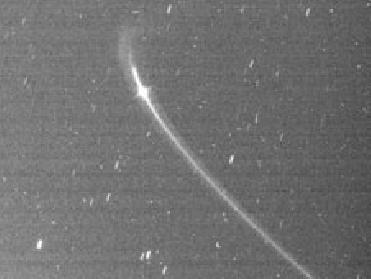
CALIFORNIA (BNS): NASA has recently released Cassini images, which depict a material, called ring arcs, extending in front of and behind the small moons Anthe and Methone in their orbits. NASA’s new findings indicate that the gravitational influence of nearby moons on ring particles might be the deciding factor in whether an arc or complete ring is formed.
According to NASA, both Anthe and Methone orbit Saturn in locations, called resonances, where the gravity of the nearby larger moon Mimas disturbs their orbits. Scientists have noted that gravitational resonances are also responsible for many of the structures in Saturn's magnificent rings. “However, Mimas provides a regular gravitational tug on each moon, which causes the moons to skip forward and backward within an arc-shaped region along their orbital paths,” Nick Cooper, Cassini imaging team associate from Queen Mary, University of London, said.
Explaining the picture further, Cooper said, “When we realised that the Anthe and Methone ring arcs were very similar in appearance to the region in which the moons swing back and forth in their orbits due to their resonance with Mimas, we knew we had a possible cause-and-effect relationship."
Scientists are of the firm opinion that the faint ring arcs from Anthe and Methone consist of material knocked off these small moons by micrometeoroid impacts. According to them, this material does not spread all the way around Saturn to form a complete ring, because of the gravitational resonance with Mimas. It is said that interaction confines the material to a narrow region along the moons orbits.
It is the first time that an arc of material has been seen near Anthe, while the Methone arc was last seen by Cassini's Magnetospheric Imaging Instrument, and the present images only confirm its existence. NASA comparing with the previous Cassini images said that the image showed faint rings connected with other small moons either embedded within or near the outskirts of Saturn's main ring system, such as Pan, Janus, Epimetheus and Pallene. Cassini had also previously observed an arc in the G ring, one of Saturn's faint, major rings, NASA scientists said.
Speaking about the G ring, Cassini imaging team associate at Cornell University in Ithaca, (NY), Matthew Hedman said that this was probably the same mechanism responsible for producing the arc in the G ring as maintained by a gravitational resonance with Mimas, much like the new, small moon arcs. “Indeed, the Anthe arc may be similar to the debris seen in the G-ring arc, where the largest particles are clearly visible. One might even speculate that if Anthe were shattered, its debris might form a structure much like the G ring,” Hedman said.
Many scientists are of the opinion that the gravitational influence of Mimas keeps the Anthe, Methone and G-ring arcs in place, while the material that orbits with the moons Pallene, Janus and Epimetheus is not subject to such powerful resonant forces and is free to spread out around the planet, forming complete rings without arcs. NASA scientists state that the delicate relationships between these ring arcs and the moons are just one of the many such mechanisms that exist in the Saturn system.
Talking about the rings in the Saturn system, Cassini Imaging Team Member and Professor Carl Murray, of Queen Mary, University of London, said that there are many examples in the Saturn system of moons creating structures in the rings and disturbing the orbits of other moons. “Understanding these interactions and learning about their origins can help us make sense of what we are seeing in the Cassini images,” Murray said
The Cassini-Huygens mission is a jointly conducted project of NASA, European Space Agency and Italian Space Agency. The Jet Propulsion Laboratory, a division of the California Institute of Technology in Pasadena, manages the Cassini-Huygens mission for NASA's Science Mission Directorate, Washington. The Cassini orbiter and its two onboard cameras have been designed, developed and assembled at JPL. The imaging team is based at the Space Science Institute, Boulder, Colorado.
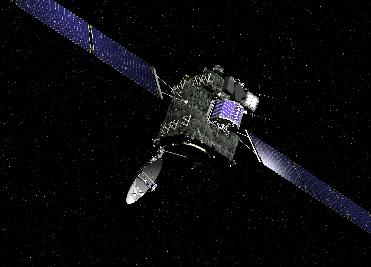 Previous Article
Previous Article Next Article
Next Article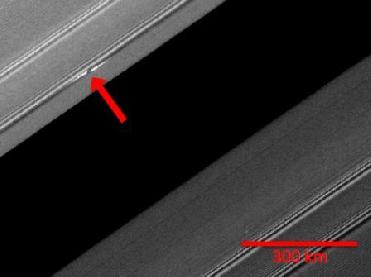
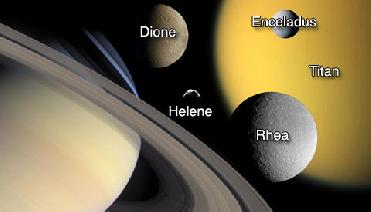
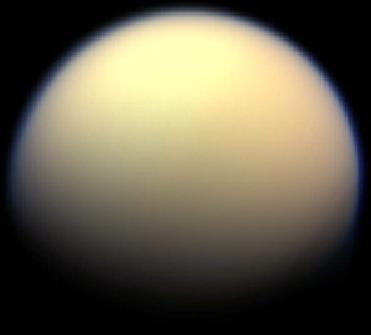
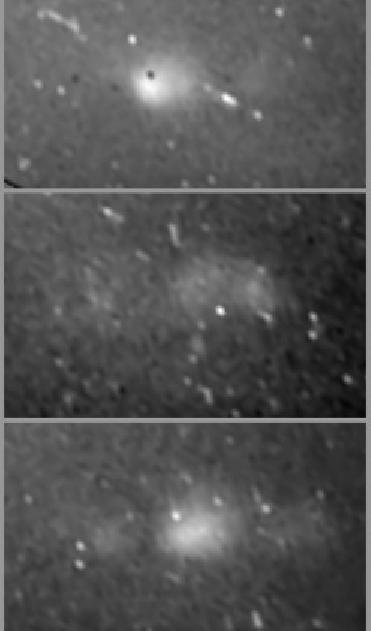










The Indian Air Force, in its flight trials evaluation report submitted before the Defence Ministry l..
view articleAn insight into the Medium Multi-Role Combat Aircraft competition...
view articleSky enthusiasts can now spot the International Space Station (ISS) commanded by Indian-American astr..
view article